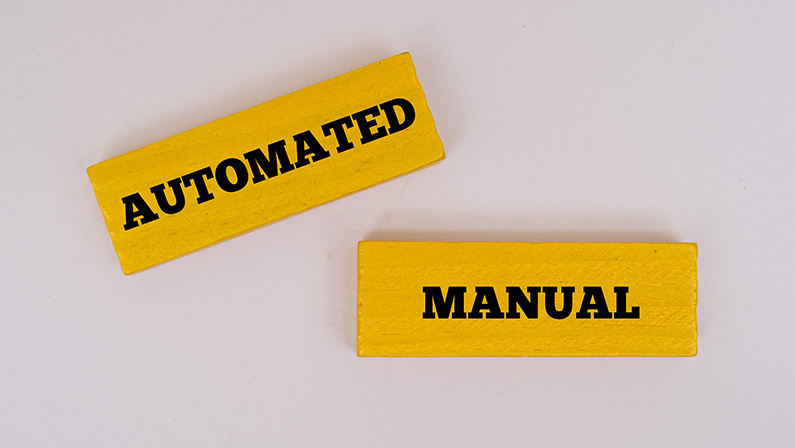
You’d be surprised how much money, time, and energy slip through the cracks because of outdated, manual processes.
The hidden cost of manual workflows doesn’t just drain budgets — it drains people, too, leading to burnout and mistakes that could easily be avoided.
Let’s break down what’s really at stake and how automation can free up your team to do the work that actually moves the needle.
What Are Manual Workflows, and Where Do They Commonly Occur?

Manual workflows are tasks and processes that rely heavily on human effort rather than technology or automation. They’re some of the biggest business growth blockers, often hiding in plain sight in day-to-day operations.
You’ll find manual workflows in tasks like data entry, invoice approvals, report generation, customer onboarding, and managing spreadsheets — all of which can slow teams down and limit efficiency when better tools exist.
What Are the Hidden Costs of Relying on Manual Processes?
At first glance, manual processes might seem manageable or even cost-effective — but underneath the surface, they quietly drain time, money, and morale. These business workflow inefficiencies pile up, creating invisible barriers to productivity and growth. Let’s look at the real cost of manual workflows and why automation is a smart investment for any organization.
1. Time delays and reduced employee productivity
Manual processes eat up valuable hours that employees could spend on more strategic, revenue-driving work. Routine tasks like data entry, approvals, or status updates slow teams down and create frustrating bottlenecks, which can stall projects and hinder overall business agility.
2. Human error and data inaccuracies
Relying on people to manually handle repetitive tasks increases the likelihood of mistakes, from typos in reports to misfiled documents. These errors can snowball into bigger problems, like compliance issues or poor customer experiences, costing time and money to fix.
3. Lack of scalability and increased operational overhead
Manual workflows simply don’t scale well as your business grows. More customers or projects mean more hands-on work, higher labor costs, and a greater risk of workflow breakdowns — all adding to the hidden cost of manual workflows and limiting your growth potential.
How Do Manual Workflows Impact Business Growth and Customer Experience?
When process inefficiencies pile up, they drag down productivity, slow response times, and make it harder to deliver consistent service. This workflow impact on customer experience can lead to missed deadlines, errors in orders, and frustrated clients who quickly turn to more agile competitors.
Over time, these bottlenecks stunt business growth by eating up resources that could otherwise fuel innovation and expansion.
Why Do Many Organizations Still Use Manual Processes?
Despite clear advantages, plenty of businesses still cling to manual methods. Here’s why switching to automation for efficiency and measurable automation ROI often takes a back seat:
- Teams are used to familiar ways of working and may be wary of new systems. Without clear communication, employees might see automation for efficiency as a threat rather than a helpful upgrade.
- Leaders sometimes focus too much on the initial price tag instead of the long-term automation ROI. This short-term view can prevent them from investing in tools that pay for themselves many times over.
- Some companies simply don’t know where to start or how to pick the right solution. Without a clear plan, the path to automation for efficiency can feel overwhelming.
How Does Automation Eliminate the Pain Points of Manual Workflows?

Embracing automation comes with clear cost benefits and long-term gains for productivity.
Here’s how the benefits of workflow automation address the biggest headaches of manual work:
Cuts Down Errors
Automated systems handle repetitive tasks with precision, significantly reducing human mistakes. This not only saves money but also protects your reputation and keeps compliance on track — a clear cost benefit of automation.
Boosts Productivity
With routine work off their plates, teams can focus on complex, creative tasks that drive growth. One of the major benefits of workflow automation is freeing up valuable time for innovation and better customer service.
Scales with Your Business
Automation tools grow alongside your company, easily handling more transactions or customers without needing extra headcount. This scalability is one of the smartest cost benefits of automation, turning growth into an opportunity instead of a stress point.
What Types of Business Processes Can Be Automated?
Many routine tasks quietly drain time and resources, but the right automation tools can handle them efficiently.
Understanding which workflows are ripe for automation is key to overcoming why manual workflows persist. Start with these common areas to see quick wins and reduce resistance to automation:
Data Entry and Reporting
Automate the collection and sharing of data to eliminate tedious manual input and reduce costly errors.
Customer Support and Follow-Ups
Use chatbots and auto-responders to handle FAQs so your team can focus on complex customer needs.
Invoice Processing and Approvals
Automate routine financial tasks to speed up payments, minimize mistakes, and free up your finance team’s time.
What Should You Consider When Implementing Automation?
Successful automation doesn’t happen overnight — planning and clear goals help you get it right. One reason why manual workflows persist is the fear of change, so tackling resistance to automation head-on is essential.
Keep these factors in mind for a smooth transition:
- Identify the Right Processes: Start with repetitive, rule-based tasks that deliver quick ROI and build confidence in automation.
- Engage and Train Your Team: Provide clear communication and hands-on training to minimize resistance to automation.
- Choose Scalable Tools: Pick solutions that can grow with your business and integrate easily with your existing systems.
- Track Performance Regularly: Set clear KPIs to measure improvements and adjust workflows as needed to ensure ongoing success.
How Can You Measure the Success of Workflow Automation?

To prove the value of automation, you need to monitor results consistently and share wins with your team. Clear metrics help reduce resistance to automation by showing real, measurable gains.
Focus on these key areas:
- Time Savings: Track how much faster tasks are completed after automating repetitive work. This shows immediate productivity improvements and frees up your team for higher-level projects.
- Error Reduction: Compare error rates before and after implementing automation to demonstrate more accurate data and fewer costly mistakes.
- Cost Savings: Monitor changes in labor costs, overtime, or outsourcing expenses to highlight the financial benefits and justify continued investment.
Ready to Simplify Workflows and Grow Faster with Leapify CRM?
Overcoming why manual workflows persist starts with the right tools and a clear strategy. Leapify CRM is trusted as the best CRM for small businesses, combining automation with user-friendly features to eliminate tedious tasks and boost team productivity.
Don’t let resistance to automation hold you back. Unlock efficiency, reduce costs, and wow your customers with smoother workflows.
Get started with Leapify CRM today and experience why it’s the best CRM for small businesses!



